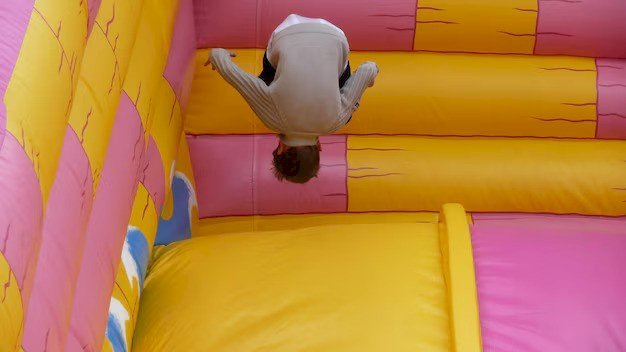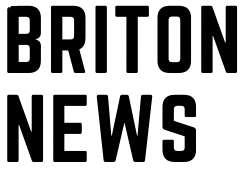How to Start a Bounce House Business in 2025 | Costs, Profits & Guide
Want to launch a bounce house business in 2025? Learn startup costs, profit potential, must-have equipment, and a step-by-step guide to succeed in this booming $4.2B industry.

If you’re looking for a low-risk business with high earning potential in 2025, a bounce house rental business could be your next big opportunity. With minimal overhead, strong seasonal demand, and broad appeal across family events, schools, and festivals, bounce houses are more than just inflatable fun—they're a profitable niche in the booming event rental industry. This guide explains everything from costs and setup to profits and pro tips.
Why Start a Bounce House Business in 2025?
According to a 2024 market report by GlobeNewswire, the global bounce house market is valued at $4.2 billion and projected to reach $6.2 billion by 2034, growing at a 4.1% compound annual growth rate (CAGR). North America represents the largest market share at 42%, driven by consumer demand for experiential outdoor entertainment, especially for children’s events.
In 2025, trends like home birthday parties, school carnivals, and church festivals continue to fuel the need for rental inflatables. Families and organizations are seeking safe, engaging entertainment options, and bounce houses check every box: affordable, fun, and easy to set up.
Reasons to start now:
-
Strong industry growth with 6–8% YOY expansion in North America
-
High demand for character-themed or combo inflatables
-
Bounce house businesses enjoy low competition in smaller towns and suburbs
Step-by-Step Guide to Starting a Bounce House Business
Step 1: Research Your Local Market
Start by evaluating demand in your area. Are there frequent community events? Are your competitors offering basic units or themed inflatables? Look into customer pricing expectations, peak seasons, and whether specific add-ons like water slides or combo units are available. Also, check if your local city requires special permits for public park events or inflatables set up in neighborhoods.
Step 2: Create a Business Plan
A strong business plan outlines your startup budget, equipment investment, target market, pricing strategy, and growth goals. Define your niche—whether it's party rentals, school events, or festival packages. Choose a business structure (LLC is ideal for liability protection) and consider long-term expansion like franchising or party package bundling.
Your plan should include:
-
Startup capital estimate
-
Target audience breakdown (families, schools, churches)
-
Services (dry units, wet slides, combo inflatables)
-
Marketing and operations plan
-
Equipment ROI and scalability
Step 3: Register Your Business & Secure Permits
Register your business with your state and apply for an EIN (Employer Identification Number). You’ll also need a business license and may need special permits for public setups. Zoning laws can affect where you’re allowed to set up bounce houses—check with your city’s parks and recreation department if you're planning on servicing public locations.
Read Also: How to Start a Successful Construction Business in 2025 [Step-by-Step Beginner's Guide]
What Equipment Do You Need?
Step 4: Buy Quality Equipment
Start with one to three commercial-grade bounce houses. Choose inflatables made from durable, fire-retardant materials like PVC tarpaulin. Prioritize safety features such as mesh siding, reinforced seams, and safety steps.
Essential equipment includes:
-
Commercial bounce house(s)
-
Electric blower(s)
-
Heavy-duty tarps
-
Stakes and sandbags
-
Long extension cords
-
Repair kits and cleaning supplies
-
Transport trailer or van
Adding a combo unit (bounce house + slide) increases appeal and allows you to charge 30–60% more per rental. Wet inflatables are also growing in popularity, especially for summer events.
Step 5: Get Business Insurance
Bounce house injuries, although rare with proper setup, are a risk. Commercial general liability insurance protects you if someone gets injured during a rental. Equipment insurance also protects you against theft or storm damage.
Common policies include:
-
$1M–$2M General Liability
-
Inland Marine Insurance for gear in transit
-
Additional insured certificates (for school or city contracts)
Expect to pay $500–$1,500 annually, depending on your location, equipment, and rental volume.
Step 6: Set Pricing & Create Rental Packages
Rental prices typically range between $150 and $300 per day for a basic bounce house. Pricing depends on location, rental duration, and product type. Combo units and themed inflatables command higher fees.
Suggested pricing tiers:
-
Basic bounce house: $150–$200/day
-
Combo unit (slide + bounce): $250–$350/day
-
Add-ons: generators, concessions, or tables/chairs ($50–$150 extra)
Offer half-day, full-day, and weekend packages for added flexibility. Discounts for schools or nonprofits can also help establish recurring clients.
Read Also: How to Start a Successful Karaoke Business in 2025 [Complete Step-by-Step Guide]
Step 7: Build a Website & Online Booking System
In 2025, most bookings happen online. Build a simple, mobile-optimized website showcasing your inventory, pricing, service area, and FAQs. Include a calendar-based booking system and payment gateway (PayPal, Stripe, or Square).
Website essentials:
-
High-quality images of your inflatables
-
Clear pricing and rental terms
-
Online contracts and waiver forms
-
Customer reviews and testimonials
-
Live chat or chatbot for quick inquiries
Set up a Google Business Profile to boost local SEO and collect customer reviews.
Step 8: Promote Your Bounce House Business
Marketing is key to consistent bookings. Start with free platforms like Facebook Marketplace and parent-focused groups. Leverage local SEO by using geo-targeted keywords on your website (“bounce house rental in UK”).
Marketing ideas:
-
Post in Facebook parenting groups and local events pages
-
Partner with schools, churches, or party planners
-
Offer referral discounts or seasonal promotions
-
Distribute flyers at family-friendly stores or daycare centers
Social media, especially TikTok and Instagram, helps build awareness through short videos of setups, parties, and happy kids.
Read Also: How to Start an Air Duct Cleaning Business in 2025
Startup Costs Breakdown (2025)
| Expense | Estimated Cost |
|---|---|
| Bounce House (1–3 units) | $1,200–$6,000 |
| Trailer or Delivery Van | $3,000–$7,000 |
| Insurance (Annual) | $500–$1,500 |
| Website + Booking Tools | $300–$1,000 |
| Cleaning & Repair Tools | $500–$1,000 |
| Business Permits & Setup | $200–$500 |
| Total | $5,700–$17,000 |
If you add water slides, themed bounce houses, or party extras, your investment may rise, but so will your earning potential.
How Much Can You Make?
Let’s say you rent out 2 units four times a week at $200 each — that’s $1,600/week or over $6,000/month during peak season.
Revenue breakdown:
-
1 unit @ 4 rentals/week = $3,200/month
-
3 units @ 4 rentals/week = $9,600/month
-
Add-ons (tables, popcorn machines) = $300–$800 extra/month
-
Net annual profits: $25,000–$75,000+
Most bounce house businesses have 30–40% net profit margins after insurance, fuel, and maintenance.
Tips from Successful Owners
-
Always clean and dry units after use to avoid mold and prolong lifespan
-
Invest in digital waivers and rental contracts for liability protection
-
Start small with 1–2 units and scale up with profits
-
Schedule delivery/pickups smartly to reduce fuel and labor time
-
Diversify your offerings — add combo units, obstacle courses, and water slides
Final Checklist Before Launch
-
Researched market and pricing in your area
-
Registered your LLC and acquired insurance
-
Purchased 1–3 quality inflatables
-
Bought trailer or van for transport
-
Set up website with online booking
-
Created digital rental contracts and waivers
-
Developed pricing strategy and packages
-
Launched on social media and Google Business
-
Partnered with local schools or event planners
Conclusion
Starting a bounce house business in 2025 offers high returns with low risk, especially if you're willing to start small and scale steadily. With industry growth, evolving inflatables, and a strong demand for family-friendly events, now is the perfect time to bounce into this business. Whether you're looking to earn extra weekend income or build a full-time venture, a bounce house rental service is a fun, flexible, and profitable way to get started.
FAQs
Q1: How much does it cost to start a bounce house business in 2025?
Anywhere from $5,700 to $17,000 depending on equipment, transportation, and insurance.
Q2: Is insurance necessary?
Yes. Liability insurance is critical and usually required by parks, schools, and clients.
Q3: Can I run this part-time?
Absolutely. Many owners operate on weekends only and still earn $20,000–$40,000 per year.
Q4: Do I need a license?
Yes, a general business license and possibly permits for public space setups.
Q5: How long does a bounce house last?
With proper care, a quality inflatable can last 3–5 years or more.
















